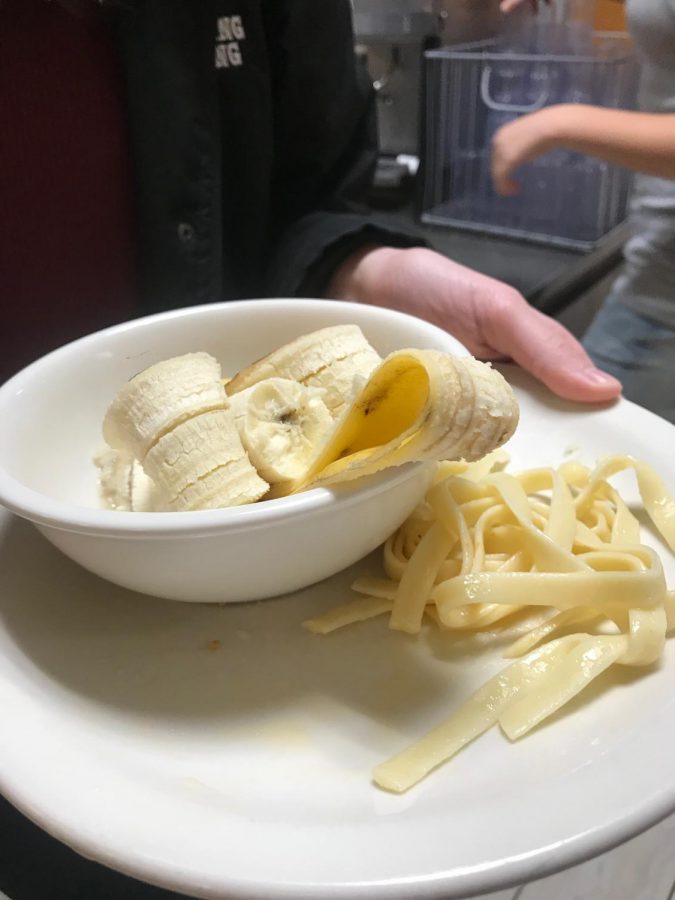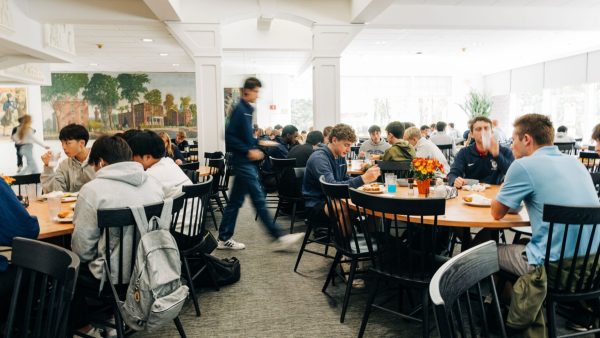Dining Hall Report: What Happens to All the Extra Food?
Do you ever wonder what happens to all the food in the dining hall that doesn’t get eaten?
Everything that is put onto the conveyor belt is thrown into the trash, and a lot of food that cannot be re-served is also disposed of. Though the amount of food being tossed away varies everyday, there is always food waste.
The Willistonian spoke to Jim Grimaldi, the General Manager of SAGE Dining Services, who explained Williston tries to minimize waste by freezing or refrigerating repurposed food. He mentioned a system called “Production Records,” which is crucial to minimizing waste.
“These [Production Records] tell us the last time we served this particular food, how much was actually prepared and used. It helps to guide us in preparing the next time we serve that particular item,” he said.
Production Records, Grimaldi explained, need to be accurate because sometimes the community eats more or less depending on the food served.
Grimaldi said, “The hot food may be repurposed twice if stored and reheated correctly, and cold foods have a longer shelf-life.” Food needs to be store appropriately in line with safe food-handling practices in order to be re-served. This allows for food to be frozen “until that item comes up on our menu, again depending on what it is.”
There are other regulations about how food is served to large parties. “Once food is handled and served to numerous people, it cannot be repurposed. This is strictly prohibited for food safety reasons,” Grimaldi said. This includes our Residential Life dinners.
The food that gets disposed of is thrown into the compost dumpster. The most common food to get tossed out, Grimaldi said, is tilapia.
A lot of people get food but don’t always finish it, observed junior Sonia Whitman. “A lot of people think that they’ll eat at the dining hall so they get a bowl of pasta, but they end up going to Tandem so they’ll just throw the food away.”
To prevent food waste, Grimaldi, referencing “the old saying, your eyes were bigger than your stomach,” suggested everyone be more aware of the portions they take. “You can always get seconds, we find that food waste increases when too much food is initially taken.”
The dining hall receives food daily, which includes: produce, meats, groceries, and bakery items.
Jeffrey Ketcham, an AP Environmental Science teacher, told The Willistonian that the true cost of running a dining hall and serving large groups of people goes far beyond just paying for the food.
All foods, Ketcham explained, require a lot of energy to produce, which is not necessarily good for the environment. “[This includes] planting and growing food, whether [it’s] plants or animals [it] takes a great deal of energy and water,” he said.
“Then it needs to be harvested,” he continued. “Then it needs to be transported from where it was grown to where it will be sold, then processed or cooked, then, after leftovers are scraped into the garbage, it needs to get transported away.”
Ketcham emphasized that continued education about using only what you need is important.
“Recycling is good, Reusing is good, but reducing is what really needs to happen,” he said.
However, Ketcham credited Williston for doing a good job at minimizing food waste by separating food from other wastes and making sure it goes to a composting bin, which is located across from the loading dock, parallel to the bike path.
According to Food and Agriculture Organization of the United Nations, roughly one third of the food produced in the world for human consumption goes to waste. That is approximately 1.3 billion tons. Also, every year, consumers in rich countries waste almost as much food as the entire net food production in sub-Saharan Africa.
Erin is a senior from Taipei, Taiwan. She enjoys playing volleyball and watching "The Bachelor" during her free time.










